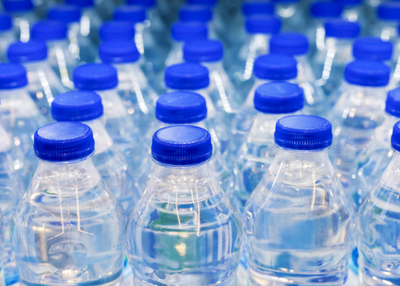Water Quality InformationWritten By Actual Experts
RSSProblems We Found In San José , California Drinking Water

Does New York City's Tap Water Have a Lead Problem?

Problems We Found With Biddeford/Saco Drinking Water
Analies Dyjak | Policy Nerd
For Hydroviv’s assessment of Biddeford and Saco's water quality problems, we collected water quality test data and information from the U.S. Environmental Protection Agency. We also cross referenced city of Biddeford and Saco's water quality data with toxicity studies in scientific and medical literature. The water filters that we sell at Hydroviv are optimized to filter out contaminants that are found in Biddeford and Saco's drinking water.
Lead In Saco/Biddeford Drinking Water
Both Saco and Biddeford are older municipalities, so it's no surprise that both have problems with lead. 10% of sites tested for lead had concentrations over 4.8 parts per billion. Environmental Protection Agency, Center for Disease Control, and American Academy of Pediatrics all recognize that there is no safe level of lead for children. Additionally, Maine Water only sampled 30 household taps for the entire Saco/Biddeford area and 3 of these sites exceeded 15 parts per billion. Lead exposure can cause developmental issues, lowered IQ, and damages to the kidneys and brain.
Disinfection Byproducts In Saco/Biddeford Drinking Water
Next is Disinfection Byproducts or DBPs. DBPs are formed when chlorine-based disinfectants that are routinely added to the water supply to kill bacteria, react with organic matter. Biddeford and Saco both had elevated levels of disinfection byproducts. According to the most recent report, concentrations of haloacetic acids ranged from 16 to 37 parts per billion. Concentrations of trihalomethanes ranged from 21 to 61 parts per billion. For a bit of perspective, EPA’s maximum contaminant level for haloacetic acids is 60 parts per billion and 80 parts per billion for trihalomethanes. Health and regulatory agencies have very little knowledge about the adverse health effects of DBPs, and their toxicity. EPA has stated that they have been linked to an increased risk of bladder cancer, as well as kidney, liver, and central nervous system problems.Other Articles We Think You Might Enjoy:
Lead In Drinking Water: What You Need To Know
What Are Disinfection Byproducts?
Hartford, Connecticut Drinking Water
Analies Dyjak | Policy Nerd
For Hydroviv’s city of Hartford, Connecticut's drinking water quality report, we collected water quality test data from Hartford's annual Consumer Confidence Report and the U.S. Environmental Protection Agency. We cross referenced water quality data with toxicity studies in scientific and medical literature. The water filters that we sell at Hydroviv are optimized to filter out contaminants that are found in Hartford's drinking water.
Where Does Hartford Source Its Drinking Water?
Hartford sources its drinking water from surface water reservoirs throughout the massive Farmington River Watershed. Because Hartford’s source water is entirely surface, pollution that’s discharged into the river or its tributaries has the potential to enter drinking water. Hartford, as well as the rest of the state of Connecticut, has a long industrial history. Hartford drinking water has contaminants associated with industrial activities such as Strontium, Barium, Vanadium and Chromium 6. Additionally, hormones caused by household waste were detected in the city of Hartford's most recent drinking water quality report.
Lead In Hartford Drinking Water
Hartford is an older city, so it’s no surprise that lead contamination is a big problem. Lead enters tap water through old lead service pipes and lead-containing plumbing. 10% of sites tested for lead had concentrations over 4 parts per billion. But the highest level detected in Hartford drinking water was 148 parts per billion. Environmental Protection Agency, Center for Disease Control, and American Academy of Pediatrics all recognize that there is no safe level of lead for children. Additionally, municipalities are only required to test a handful of homes every few years, so the levels reported in Hartford’s annual water quality report might not reflect the lead levels in your tap water. Lead exposure can cause developmental issues, lowered IQ, and damages to the kidneys and brain.
Disinfection Byproducts In Hartford Drinking Water
Hartford also has a serious problem with disinfection byproducts or DBPs. DBPs are formed when chlorine-based disinfectants that are routinely added to the water supply to kill bacteria, react with organic matter. In this years report, concentrations of haloacetic acids ranged from 7.7 to 38.2 parts per billion and 15.3 to 72.8 parts per billion for trihalomethanes. For a bit of perspective, EPA’s maximum contaminant level for haloacetic acids is 60 parts per billion and 80 parts per billion for trihalomethanes. While Hartford's water quality is technically in compliance with EPA’s threshold, regulatory agencies have very little knowledge about the adverse health effects of DBPs, and their toxicity. EPA has stated that they have been linked to an increased risk of bladder cancer, as well as kidney, liver, and central nervous system problems.
Other Articles We Think You Might EnjoyLead In Drinking Water: What You Need To Know
What Are Disinfection Byproducts?
Breakdown of The Lead and Copper Rule
Is Bottled Water Safer Than Tap Water?

Analies Dyjak | Policy Nerd
People often purchase bottled water under the assumption that it’s much safer than what’s coming out of their tap. Marketing schemes lead consumers to believe that large corporations bottle and distribute only the purest water from crystal clear springs. The reality is that bottled water isn’t as safe as people are led to believe. This article discusses the regulatory, environmental, and ethical dilemmas associated with bottled water.
How Is Bottled Water Regulated In The United States?
The Food and Drug Administration regulates bottled water, and the Environmental Protection Agency regulates tap water. People are often surprised to find out that the drinking water standards for both of these agencies are nearly the same. Under the Safe Drinking Water Act, certain chemicals that can enter drinking water must be allowable limits. This list of allowable contaminants and their concentrations are identical for bottled and tap water, with the exception of lead. FDA regulates lead more stringently because companies shouldn’t ever have a reason to use lead infrastructure in the bottling process. But still, there is an allowable level of lead in bottled water of 5 parts per billion. EPA, CDC, American Academy of Pediatrics and other health organizations have all acknowledged that there is no safe level of lead for children. FDA must follow their own monitoring guidelines, which are often much more lax than EPA’s for municipal tap water.
Where Does Bottled Water Come From?
A lot of bottled water companies are deceptive as to where they actually source their water. Companies are legally allowed to draw water from artesian wells, mineral water, natural springs, drilled wells, and municipal tap water. That’s correct. Bottled water companies are allowed to use the same treated water as municipal water systems. Additionally, companies are not legally required to disclose where they source their water on the bottle itself. Municipal water systems are actually much more transparent because they’re required to disclose information about source water in annual consumer confidence reports. Depending on the brand, there’s of course a substantial cost associated with purchasing packaged water.
Environmental Effects of Plastic Water Bottles
“Trash Island” in the Northern Pacific Ocean is probably the best physical example of the environmental effects of plastic and plastic water bottles. 91% of plastic isn’t recycled, meaning a majority of virgin, single-use plastic ends up in landfills or the environment. According to a 2016 study by the Ellen Macarthur Foundation, the ocean will contain more plastic by weight than fish in the year 2050. The main ingredient in plastic bottles is polyethylene terephthalate (Pet) which takes 400 years to decompose in the environment. Once degraded, dangerous chemicals such as Bisphenol A (BPA), polyvinyl chloride and other phthalates can leach into the environment. Not to mention the important natural resources required to make plastic water bottles. Plastic is a product of petroleum, which is a non-renewable fossil fuel.
The Ethics of Bottled Water
There’s also an ethical environmental dilemma associated with extracting water from a drought prone area, then selling it across the country or even the world. Nestle owns aquifers in California which has been experiencing a serious drought in recent years. Because Nestle is able to purchase expensive deep drills that municipalities can’t even afford, they’re able to continue extracting water business as usual. Additionally, native american tribes are significantly affected by bottled water companies. Tribes enter lease agreements with companies that are frequently violated. Even if they don’t have a legal agreement the same issues arise with the definition of “reasonable use” under the riparian law.
Other Articles We Think You Might Enjoy:Microplastics In Water: What You Need To Know
Endocrine Disruptors In Drinking Water
Water Conservation and Water Quality In The Sports Industry


